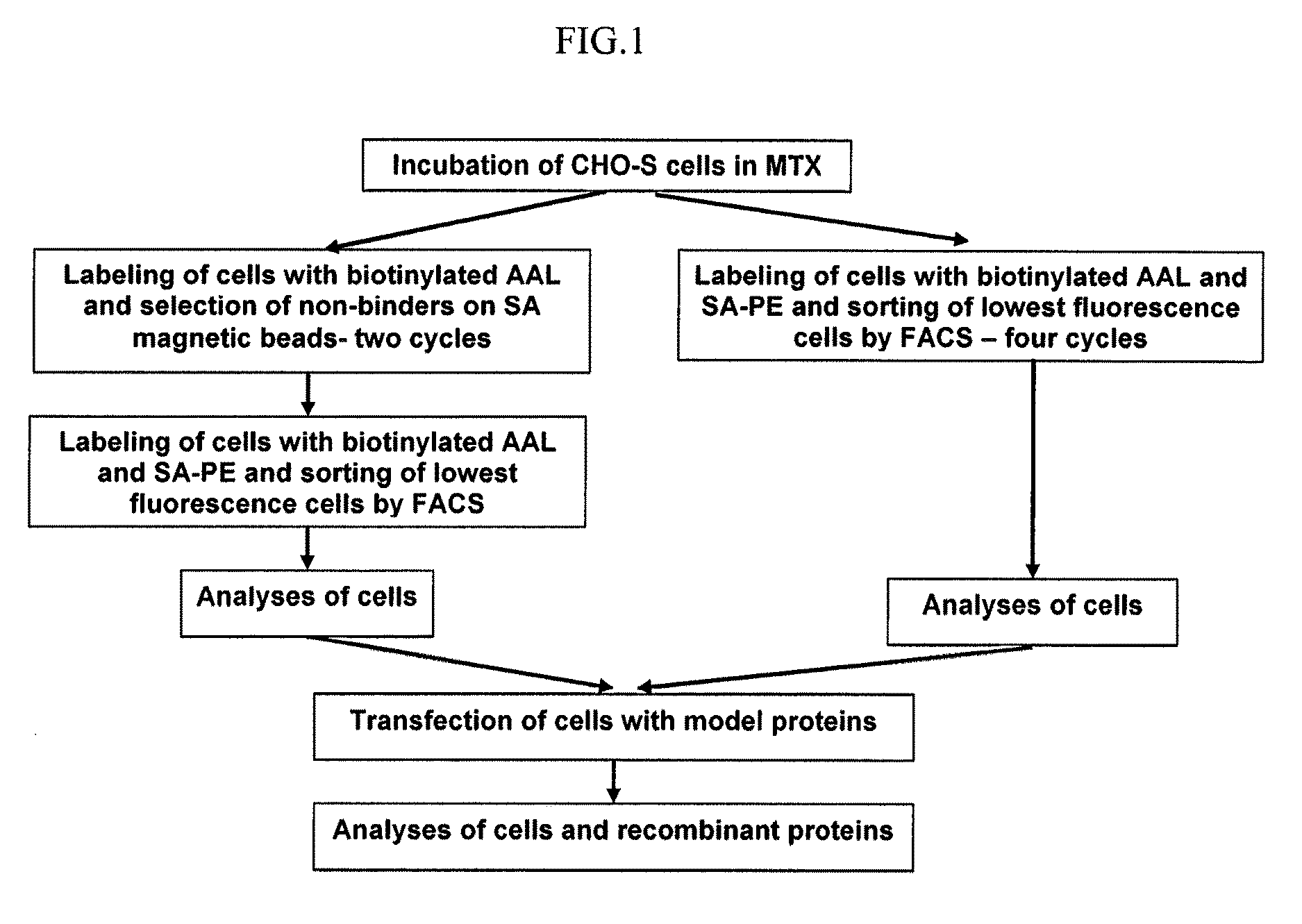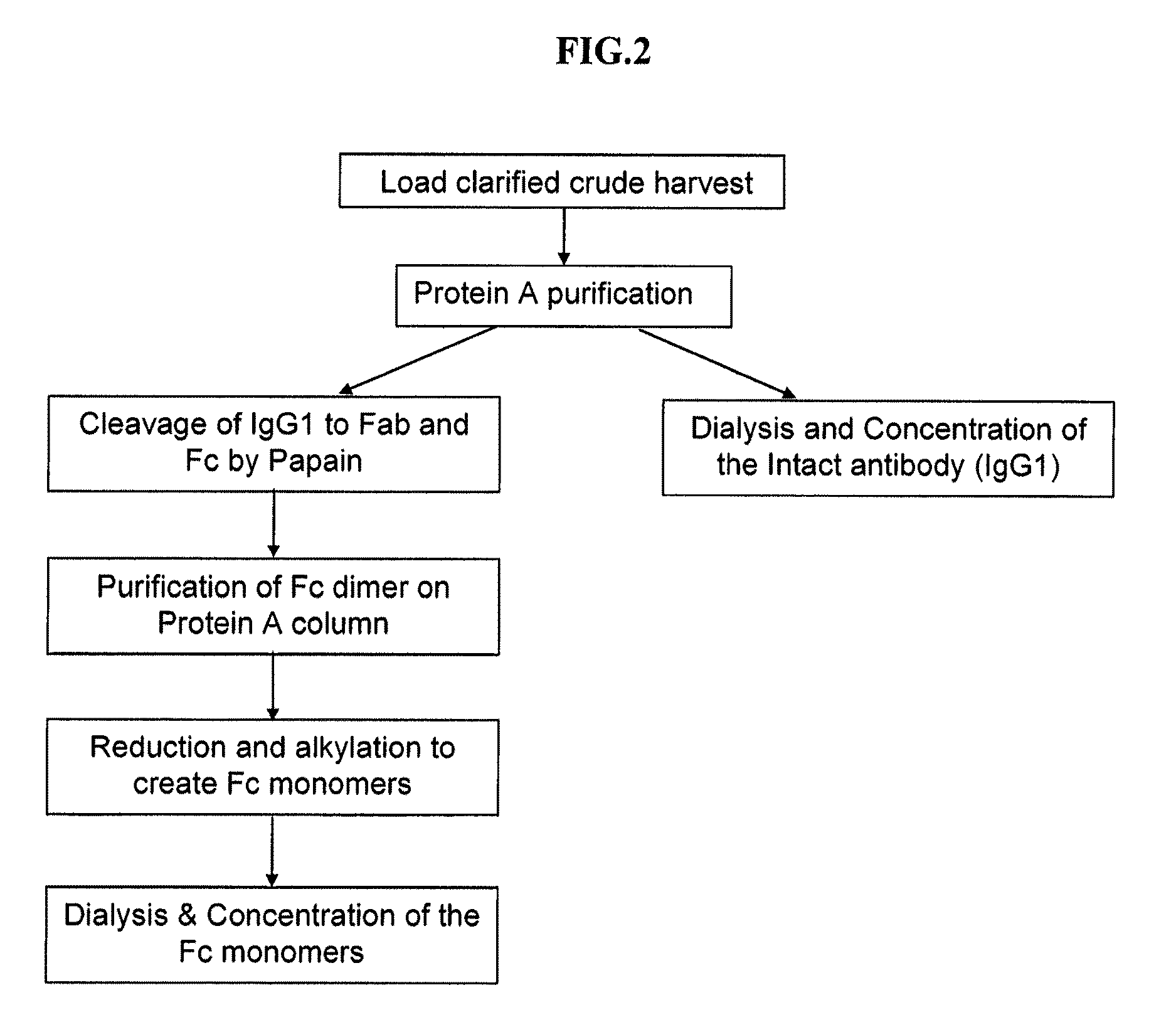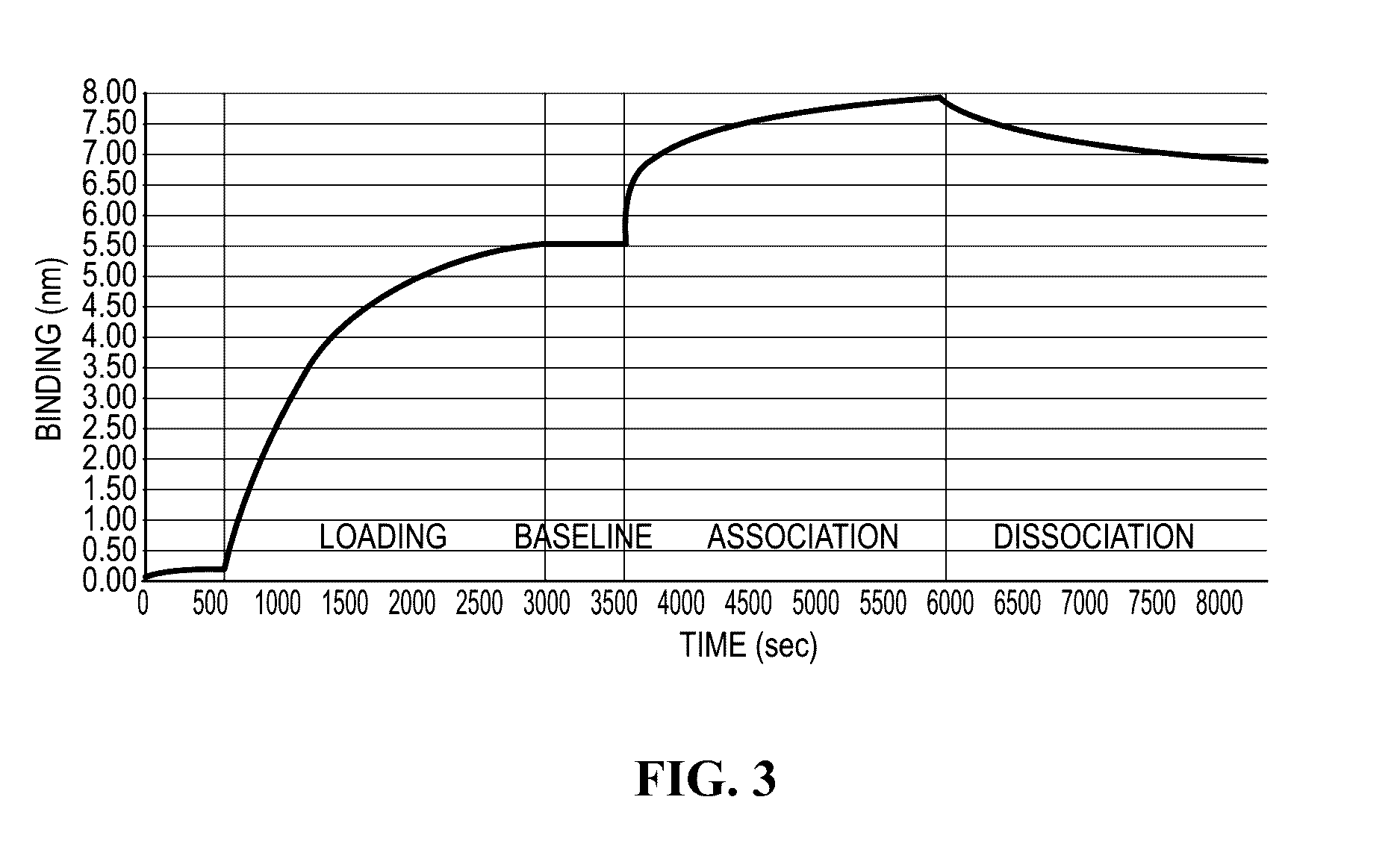Low fucose cell lines and uses thereof
a cell line and low fucose technology, applied in the field of cho cell lines, can solve the problems of insufficient adcc activity obtained upon binding of nk cells to target cells to perform the killing of target cells, and the lec13 cell line is not suitable as a production cell lin
- Summary
- Abstract
- Description
- Claims
- Application Information
AI Technical Summary
Problems solved by technology
Method used
Image
Examples
example 1
Strategy for Isolation of Low Fucose Containing Cells
[0579]The strategy employed for isolation of low fucose expressing cells was based on creation of random mutations and selection of cells with the required low fucose phenotype.
[0580]The process comprised several steps (as depicted in FIGS. 4 and 5) and was initiated by by incubation of CHO-S cells with the mutagenic agent MTX so as to generate mutations. Then MTX was removed and the cells were isolated according to one of the following steps:[0581]1. Two rounds of cell labeling with biotinlyated fucose specific lectin (biotinylated AAL or AOL) and isolation of cells that do not bind to streptavidin coated magnetic beads. This step was followed by cell labeling with biotinlyated fucose specific lectin (biotinylated AAL or AOL) and fluorescent streptavidin and a single sort of the low fluorescent cells by FACS (FIG. 4).[0582]2. Four rounds of cell labeling with biotinlyated fucose specific lectin (biotinylated AAL) and fluorescent ...
example 2
Selection of Low Fucose Cells by Two Rounds of Isolation with Streptavidin Magnetic Beads and One FACS Sorting Cycle (ITL-LF1 Cells)
[0585]Fifty million CHO-S cells incubated in 200 nM MTX, wild type CHO-S and CHO DUKX cells were separated once on magnetic beads seeded in 96 well plates propagated and transferred in T80 flasks. The number and the viability of the separated unbound cells was higher in the case of the MTX treated CHO-S cells and much lower in non MTX treated cells. Moreover, CHO-S cells incubated in MTX reached T80 flasks in 14 days, whereas CHO-S and CHO-DUKX reached T80 flasks only after 22 days. Further low fucose cell isolation was done only with MTX treated CHO-S cells. The second streptavidin coated magnetic beads isolation was initiated with 5×107 cells and the selected non-binding cells were seeded in 96 well plates. FACS sorting of the 1.5% lowest fucose population was performed with 4×107 cells following recovery and cell propagation.
[0586]Analysis of Fucose ...
example 3
Selection of Zero Fucose Cells by Sorting with FACS (ITL-LF2 Cells)
[0597]CHO-S cells incubated in 200 nM MTX were sorted by FACS to select for a low fucose population. The initial cell number taken for sorting, the fraction of low fucose gated cells as well as the number of sorted cells in every sorting cycle is indicated in Table 4 herein below.
[0598]
TABLE 4FACSsortingInitial cell% of cellsSorted cellcyclenumbergatednumber16.5 × 1070.21.2 × 104*26.5 × 1070.075.8 × 103*3 8 × 1071.0 8 × 105#4 6 × 1072.0 1 × 106#*Cells counted by Cellavista after sort#Estimated number of cells according to the FACS gate.
[0599]Analysis of Fucose Level on Cells' Membrane:
[0600]Analysis of the fucose level on the cells' surface showed that following labeling of cells with biotinylated AAL and SA-PE, the zero fucose sorted CHO-S MTX fraction increased with the number of sorts performed. Three rounds of sorts resulted in a homogenous population with low fucosylation levels. A fourth sort was applied in...
PUM
 Login to View More
Login to View More Abstract
Description
Claims
Application Information
 Login to View More
Login to View More - Generate Ideas
- Intellectual Property
- Life Sciences
- Materials
- Tech Scout
- Unparalleled Data Quality
- Higher Quality Content
- 60% Fewer Hallucinations
Browse by: Latest US Patents, China's latest patents, Technical Efficacy Thesaurus, Application Domain, Technology Topic, Popular Technical Reports.
© 2025 PatSnap. All rights reserved.Legal|Privacy policy|Modern Slavery Act Transparency Statement|Sitemap|About US| Contact US: help@patsnap.com



